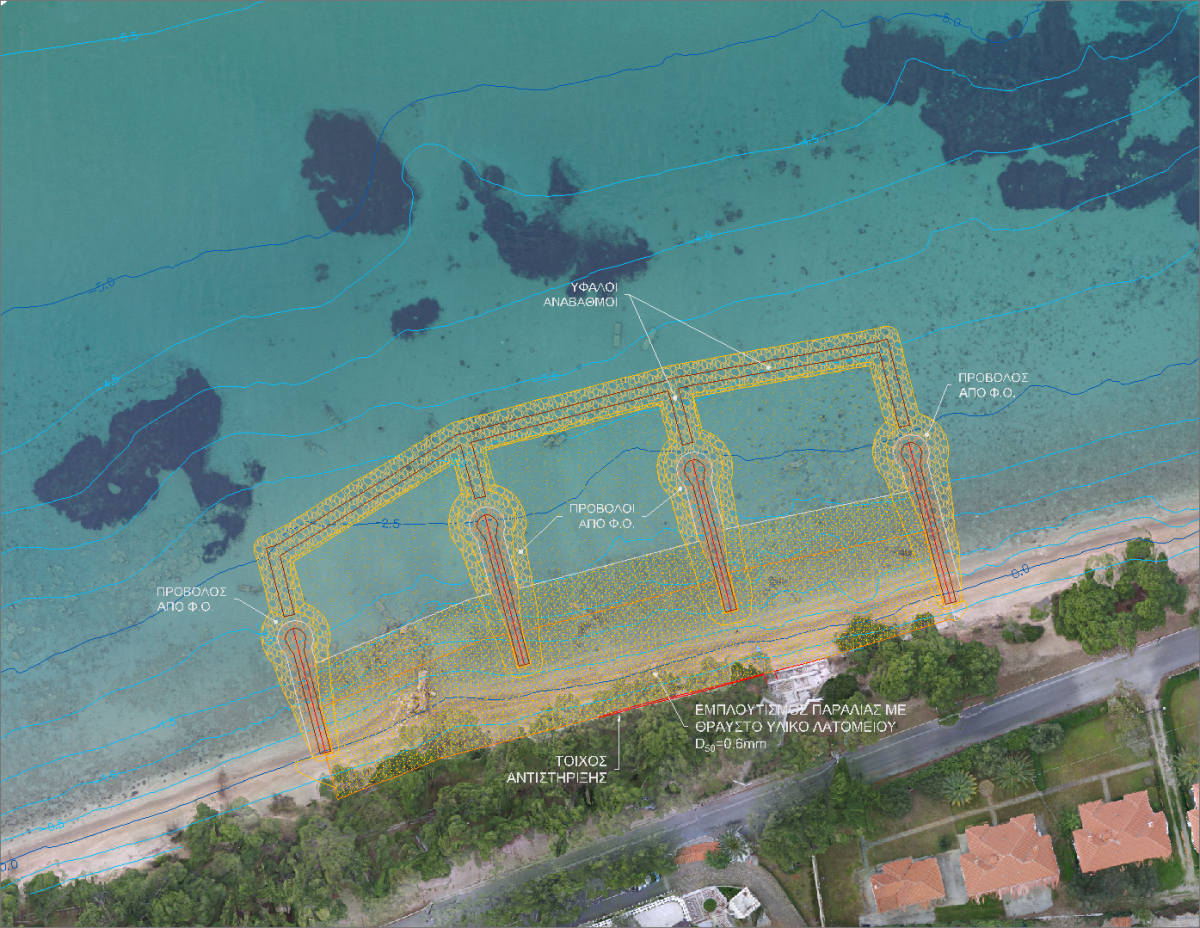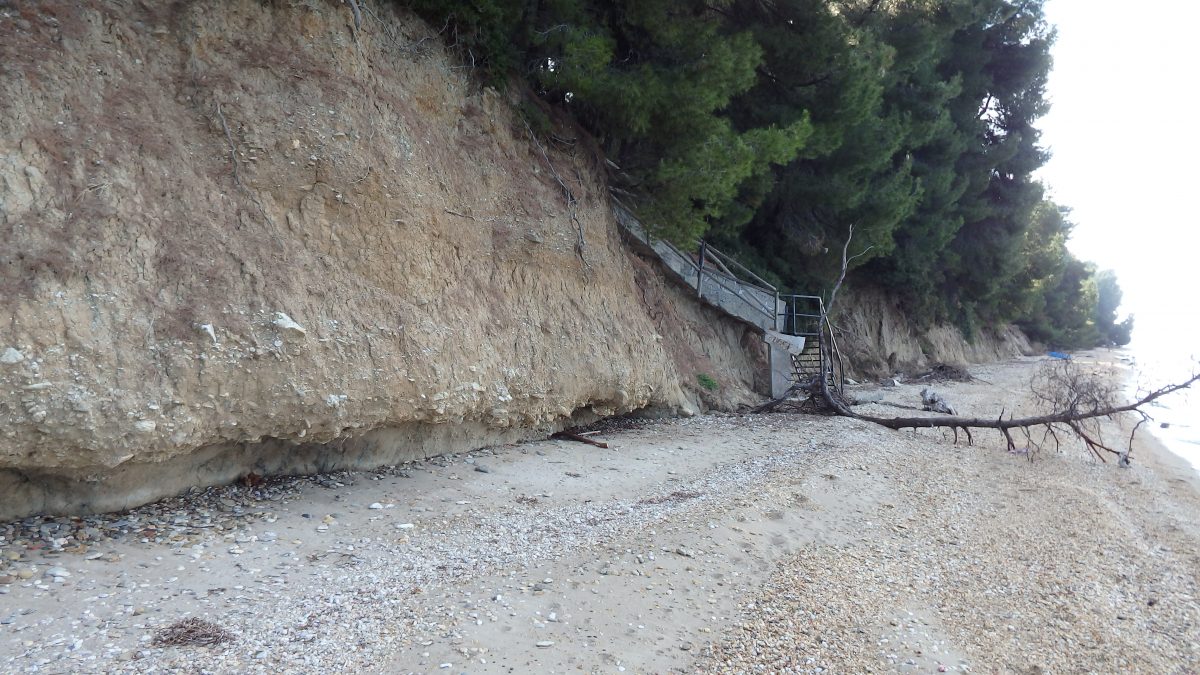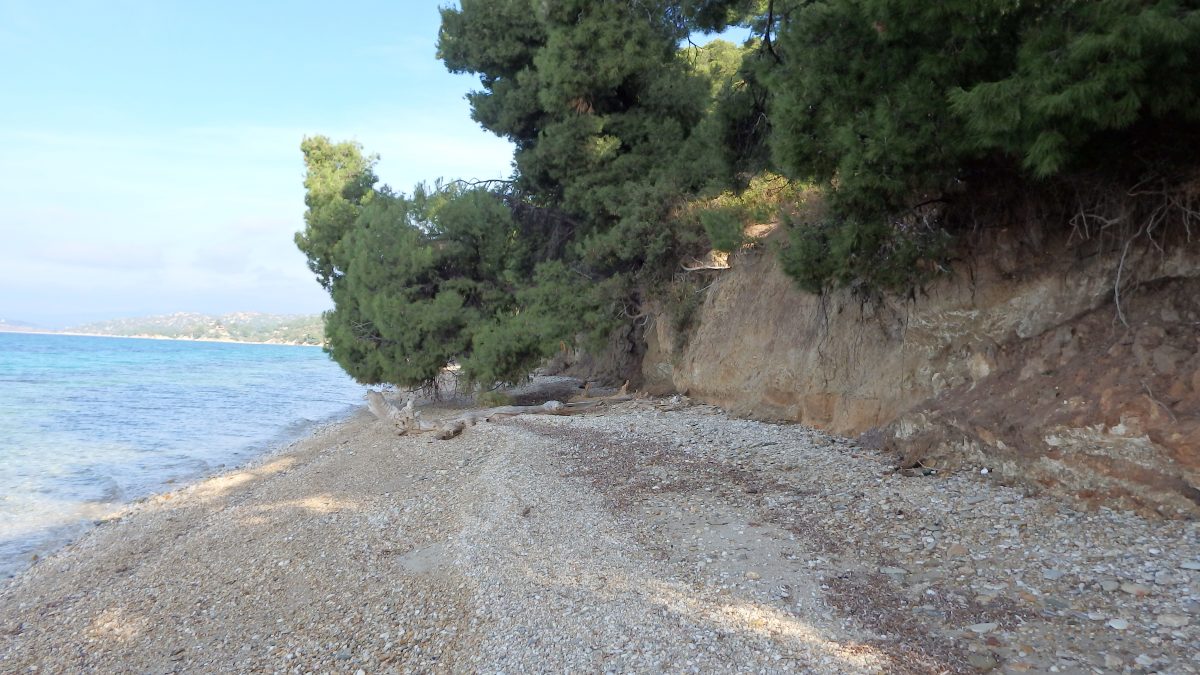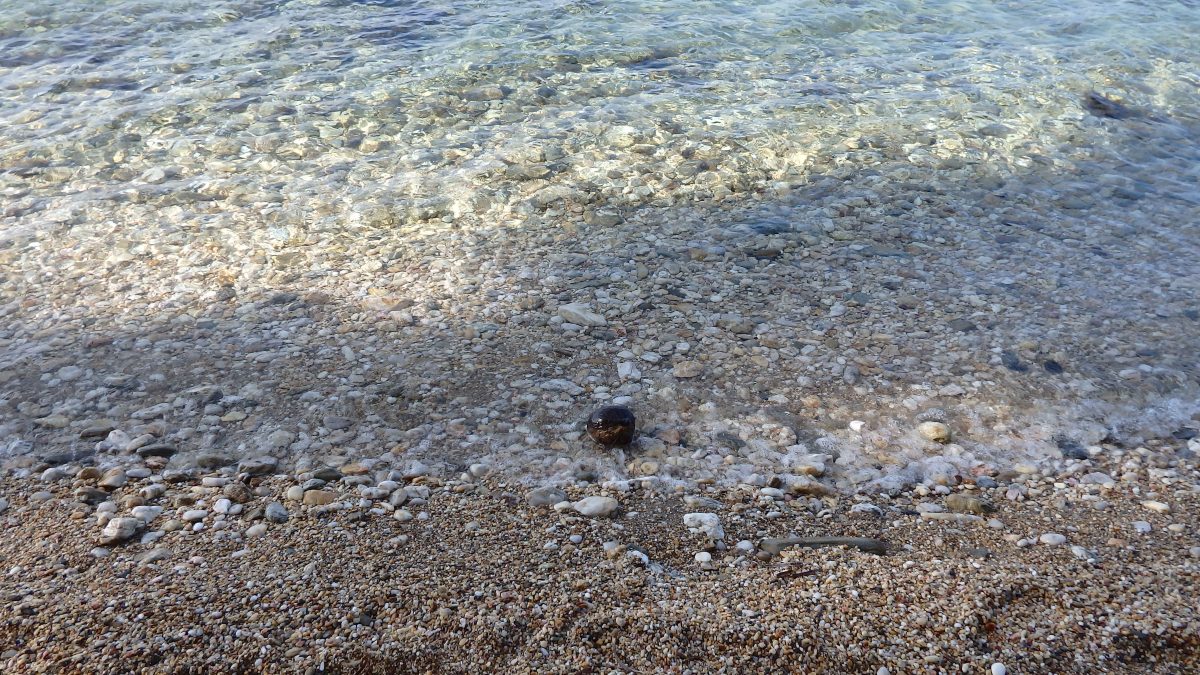Beach nourishment and protection of Athena Pallas Village hotel beachfront - Chalkidiki Region
Athena Pallas Village hotel unit of ACROTEL group is located at a special, in terms of natural beauty, environment. The beaches feature turquoise waters, white sand and pine trees that reach down to the sea. The area is in fact a designated Natura site (SCI & SAC*). However, the coastline faces severe erosion problems and locally declines at an alarming rate, threatening both the natural environment and infrastructure.
*Site of Community Importance (SCI) and Special Area of Conservation (SAC)
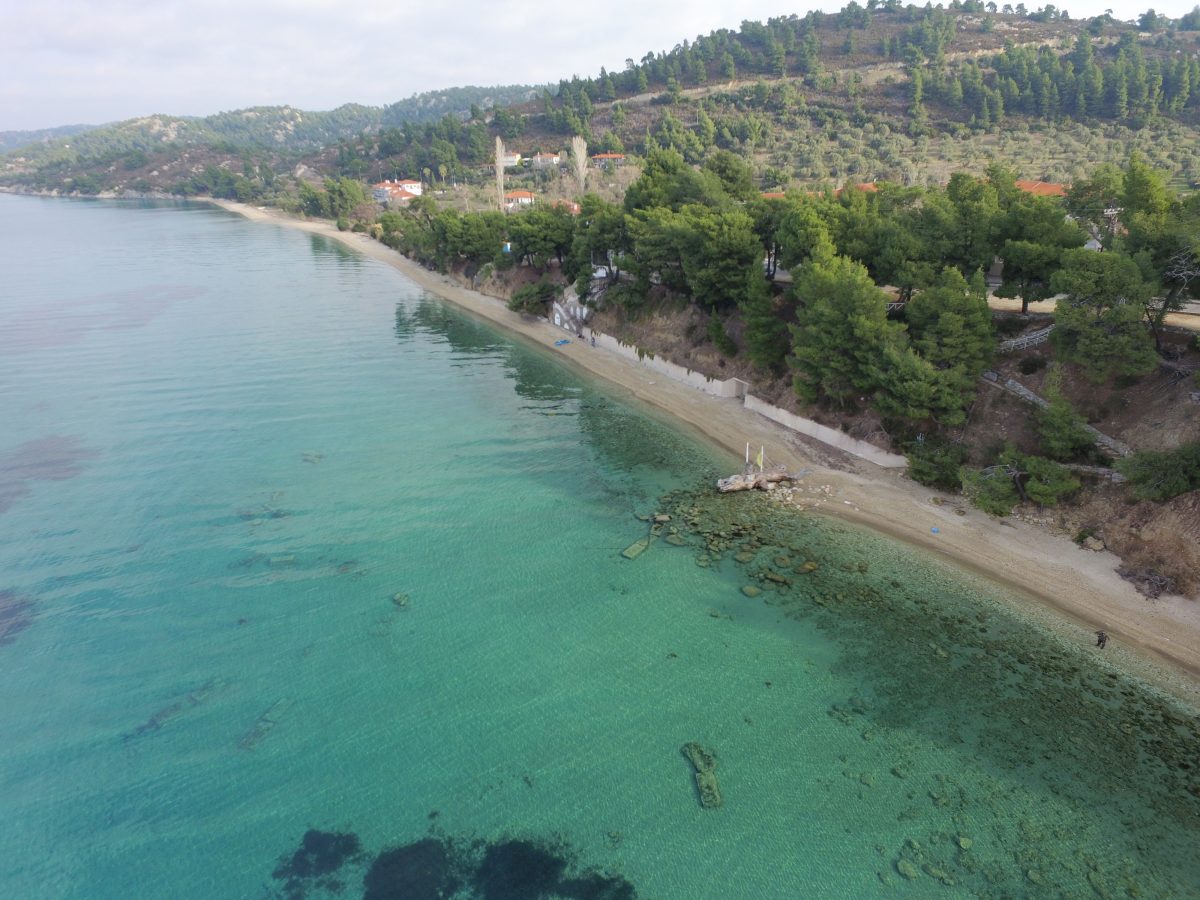
Existing conditions
At the hotel location, besides the limited beach width and the complete lack of fine sediments (only shingles lie up to a depth of 2,5 meters), stability problems of adjacent soil slopes, are posing risks to visitors.
Beach nourishment and coastal protection study
The hotel administration acknowledged the above risks and desired to upgrade the quality of its services, thus in December 2005 it contracted CNWAY to carry out the beach nourishment and coastal protection study of the hotel beachfront.
The scope of the contract comprises of the following:
- hydrographic survey and seabed vegetation mapping,
- preliminary design of works,
- sediment transport study and
- permitting of proposed works.
Before preliminary design took place, the project main goals were set out in cooperation with the hotel administration. These are:
- a beach 120m long and 22-25m wide
- make sure no erosion occurs downstream of the works.
Design optimization
The preliminary design for beach rehabilitation was based on the assumption that the nourishment material would be fine gravel, which would allow a steeper face towards the sea. The solution was tested with the numerical model and the results confirmed it works.
After detailed evaluation of all available nourishment sources , the design team in cooperation with the administration, ultimately chose to nourish with sand equivalent to that found on local beaches. The particle size of the selected sand is much smaller than that of fine gravel, therefore the design was changed to maximize retention of the sediment.
Project design optimization was carried out, in the context of the sediment transport study by means of numerical modeling,. The study investigated the response performance of retention structures against the local wave climate and improved the layout in order to minimize sediment loss. The optimization was completed in three consecutive iterations until their response was satisfactory.
Proposed works
The proposed works constitute of a field of groynes perpendicular to and sills parallel to the coastline and beach nourishment in between. The groyne field was deemed necessary as the surrounding coastal zone is subject to intense erosion by strong waves that mainly occur during winter months. It is therefore impossible to retain the nourishment material without providing a means to prevent its dissipation. The works layout aimed at maximizing nourishment retention, while at the same time allowing sediment bypass, thus limiting possible erosion at the downstream shore. The detached breakwater alternative was rejected at the early stages due to environmental limitations (existence of posidonia oceanica meadows) and increased capital costs.
Particular effort was put in sourcing appropriate nourishment material, which should meet the following requirements:
- Be sourced from permitted sources and at sufficient supply
- Be of similar physical properties to sediment found in the project area
- Least expensive in terms of purchasing and transportation costs to site
The main characteristics of the proposed solution are:
- Construction of four variable length groynes arranged in positions that facilitate sediment bypass
- Provision of sills parallel to the coast to limit dissipation of sand to deep waters
- Nourished beach width ranging from 17,0 to 19,0m
- Sourcing of nourishment material with physical properties similar to the natural environment
- Beach crest level at +0,80m from M.S.L.
- Initial nourishment beach face slope at 1:10
